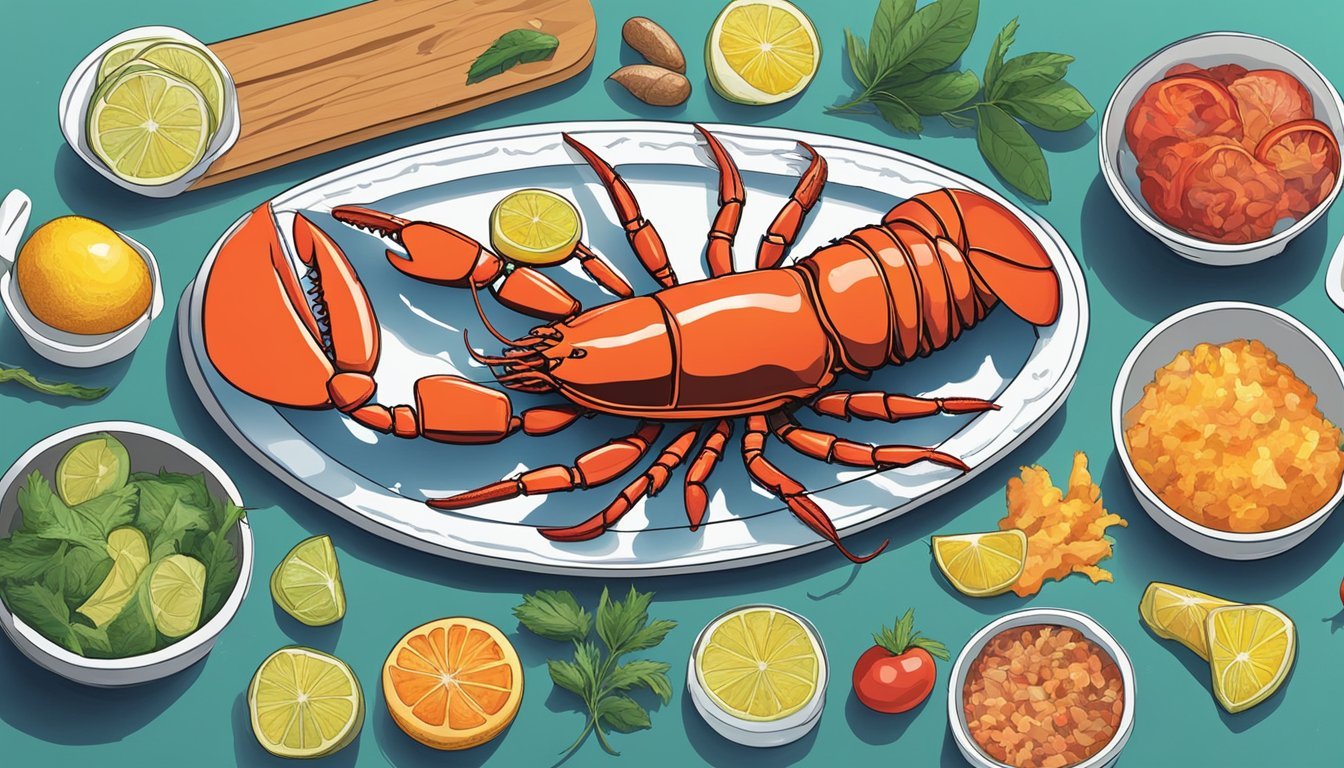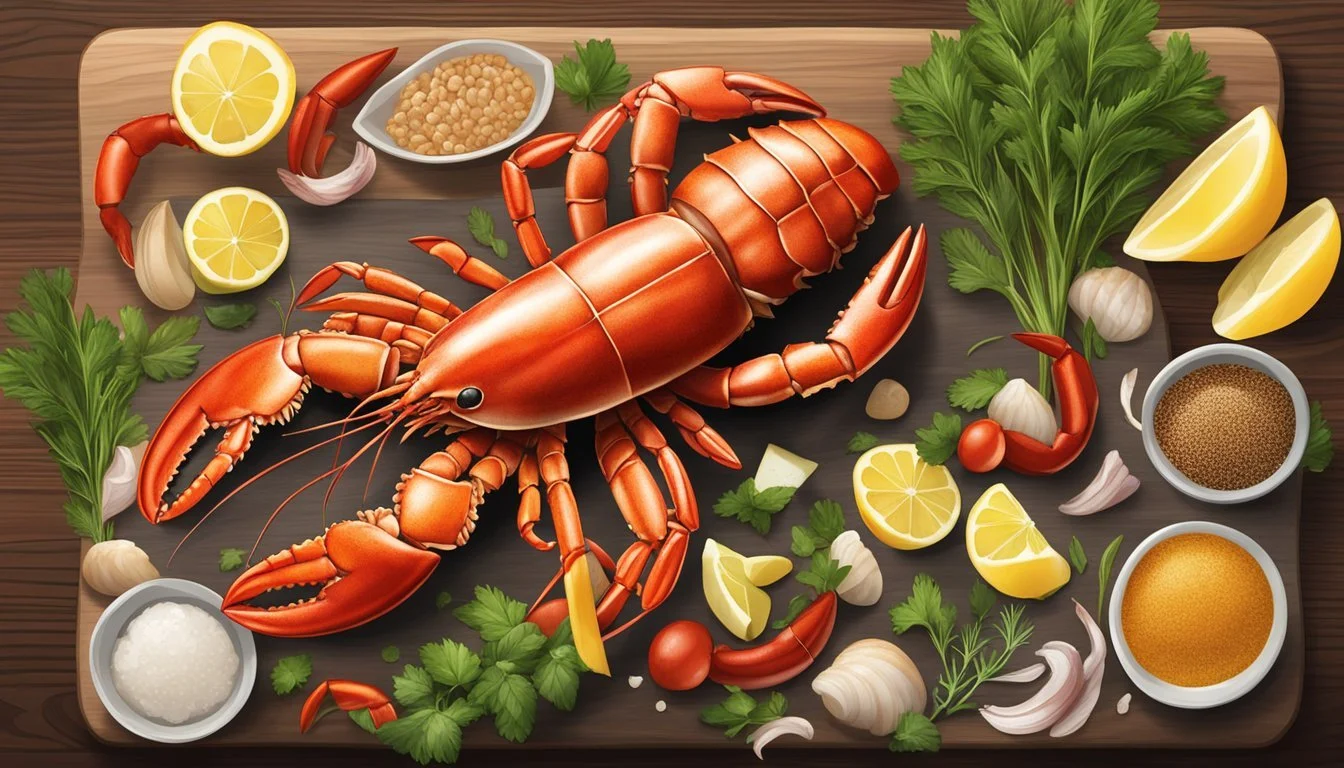Lobster Substitutes
Top Alternatives for Gourmet Cooking
Finding the perfect substitute for lobster can transform your culinary experience while being mindful of budget, dietary preferences, or availability. Monkfish, often dubbed the "poor man's lobster," offers a firm texture and mild flavor reminiscent of lobster, making it an excellent choice for various dishes.
Other alternatives like crayfish, crab, and langoustines also bring unique qualities to the table. Each provides a distinct taste and texture, catering to diverse recipes and meal preparation methods. Affordable and versatile, these options allow you to enjoy the essence of lobster without the high cost.
Exploring non-traditional substitutes can open up even more possibilities. Plant-based options such as hearts of palm and tofu cater to those seeking sustainable or allergen-free choices, without compromising on taste or quality.
Understanding Lobster's Unique Appeal
Lobster is renowned for its distinct flavor, pleasing texture, and rich nutritional profile. These aspects make it a sought-after ingredient in many seafood dishes.
Flavor Profile and Texture of Lobster
Lobster has a sweet, succulent flavor that sets it apart from other seafood. Its meat is slightly briny, with a delicate balance of sweetness and a hint of the ocean.
The texture is firm yet tender, providing a satisfying bite that can hold up in various cooking methods. Whether boiled, steamed, or grilled, the lobster maintains its unique mouthfeel.
Enhancing the flavor often involves using butter, Old Bay seasoning, or miso. These ingredients complement and elevate the lobster's natural taste, making it even more appealing.
Nutritional Benefits and Culinary Uses
Lobster is not just delectable but also highly nutritious. It is a good source of protein, vitamins, and minerals like B12, zinc, and copper.
While it does contain cholesterol, it is low in saturated fats, making it a healthier choice compared to red meat. Lobster is often incorporated into dishes such as lobster rolls, bisques, and pasta.
These culinary uses highlight its versatility. The ability to pair it with various ingredients and cooking styles expands its appeal across different cuisines and meal types.
Top Lobster Substitutes in Cooking
When lobster is unavailable or not preferred, various substitutes can replicate its luxurious texture and sweet flavor. These alternatives fall primarily into three categories: crustaceans, fish-based options, and plant-based or vegan choices.
Crustacean Alternatives
Crab: King crab offers a comparable texture and a sweet taste similar to lobster. The large, meaty legs make it a luxurious replacement. It's abundant in protein and works well in dishes that highlight seafood's natural flavors.
Shrimp: Shrimp is a versatile option with a robust taste. Smaller in size, it still captures a similar sweetness. Shrimp can replace lobster in many recipes, from salads to pasta.
Langoustine: Langoustines are small, lobster-like crustaceans with tender and sweet meat. They can be used as a 1:1 substitution for lobster, providing a succulent and delicate flavor profile.
Fish-Based Substitutes
Monkfish: Known as the "poor man's lobster," monkfish boasts a firm, meaty texture and mild, sweet flavor. It holds up well in slow-cooked dishes like stews and paellas, making it a versatile alternative.
Salmon: Salmon provides a distinctly different flavor but can substitute for lobster in terms of texture and richness. It is also high in beneficial fatty acids and protein, making it a healthy and hearty option.
Surimi: Often made from white fish like pollock, surimi is molded and flavored to resemble crab or lobster meat. It's a commonly available and budget-friendly option that can be used in various seafood recipes.
Plant-Based and Vegan Options
Tofu: Tofu is a popular vegan substitute for lobster due to its ability to absorb flavors and its similar texture when cooked. It's a nutritious choice rich in protein and can be seasoned to mimic the taste of seafood.
Hearts of Palm: Hearts of palm can be shredded to resemble the texture of lobster meat. They are suitable for cold dishes like salads and lobster rolls, where their mild flavor can be accentuated with seasonings.
Jackfruit: Jackfruit is a versatile plant-based ingredient that can replicate the texture of lobster. When cooked and seasoned, it can provide a seafood-like experience in dishes such as tacos or curry.
Crawfish: Crawfish, also known as crayfish, are small and have a sweet flavor similar to lobster. They are used frequently in Cajun and Creole cooking and can be an excellent substitute for lobster in various recipes.
Crafting the Perfect Lobster-Like Dish
Creating an authentic lobster-like dish hinges on selecting the right ingredients and seasoning, along with using recipes that replicate the rich taste and meaty texture of lobster.
Choice of Ingredients and Seasoning
When making a lobster-like dish, monkfish and king crab are prime choices due to their similar texture and flavor. Monkfish, known as "poor man’s lobster," offers a mild, sweet flavor, while king crab provides a luxurious taste. Shrimp and langoustine are also excellent options.
Key seasonings include Old Bay seasoning, paprika, and lemon juice to enhance the seafood profile. Garlic and butter are essential for their rich aroma and flavor. Use a bouillon cube or lobster base substitute for an authentic stock. Add onions, celery, and a touch of tomato paste for depth and color.
Proper seasoning ensures the dish mimics lobster's salty and sweet flavor profiles. Adjust spices to match the aroma and savory quality akin to lobster dishes. Using fresh ingredients significantly impacts the taste and overall experience.
Lobster-Inspired Recipes
Popular lobster-style recipes include lobster bisque, chowder, and lobster rolls. For a creamy bisque, combine cream, butter, and a lobster base substitute with onions, celery, and tomato paste. Simmer and blend until smooth and rich.
For a lobster roll, use king crab or monkfish mixed with mayonnaise, lemon juice, and a pinch of Old Bay seasoning. Serve in a toasted bun with a side of buttered mushrooms.
In soups and gravies, adding garlic and paprika can infuse flavors that resemble lobster. Consider a dashi or miso base for a unique take, blending umami elements with traditional lobster-like tastes.
Adapting these recipes with substitutes ensures a delightful experience, with flavors and textures that satisfy just like authentic lobster dishes would.
Adjusting for Dietary and Health Considerations
When choosing a lobster substitute, addressing dietary needs and health concerns is essential. Common considerations include managing shellfish allergies and reducing cholesterol, as well as selecting seafood with a lower environmental impact.
Shellfish Allergies and Cholesterol Management
Shellfish allergies are a serious concern for many individuals. Alternatives to lobster, such as tofu, can be a safe option. Tofu is praised for its versatility in texture and flavor, making it a popular choice for vegan dishes while avoiding allergenic shellfish. It also offers a good amount of protein, making it a healthy and nutritious substitute.
Cholesterol management can also influence seafood choices. Shellfish like lobster are known to contain high cholesterol levels. Monkfish, often called "poor man's lobster," is a milder option with lower cholesterol content.
Monkfish and tofu can accommodate dietary restrictions and contribute to better heart health. This consideration helps in maintaining a balanced and heart-healthy diet without compromising on taste and texture.
Environmentally-Conscious Seafood Choices
Ecological impact plays a significant role when selecting alternatives to lobster. King Crab and monkfish are harvested from more sustainable sources compared to overfished lobster populations. Choosing these alternatives can contribute to the conservation of marine ecosystems.
The seafood industry faces challenges such as overfishing and habitat destruction. By opting for sustainable options, consumers can reduce negative environmental effects. Tofu, as a plant-based option, is highly sustainable and has a low ecological footprint.
Sustainable choices are not only beneficial for the planet but can also come with health benefits like higher levels of omega-3 fatty acids found in fish like monkfish. These acids are essential for maintaining cardiovascular health.
Exploring Seafood Industry and Economic Impacts
The seafood industry plays a critical role in the economy and impacts both environmental sustainability and affordability of seafood options. Key issues such as overfishing and the necessity of sustainable practices are paramount.
Sustainability and Overfishing Issues
Overfishing remains a substantial global threat, impacting marine biodiversity and the long-term availability of seafood. One of the most affected species is lobster, which has faced significant pressures due to high demand.
The U.S. Midcoast region highlights these issues, with over 10,000 jobs in the seafood sector and substantial economic contributions from lobster harvesting. Effective management strategies and regulations help mitigate these impacts, promoting sustainable yields.
Innovations in aquaculture offer promising alternatives by providing a controlled environment for seafood growth, ensuring less strain on wild populations. Sustainable aquaculture practices are crucial in meeting future seafood demands without exacerbating overfishing.
Affordability and Supply Alternatives
Affordability often dictates seafood consumption patterns, affecting both supply and demand. Lobster prices, driven by delicacy status and market dynamics, can fluctuate significantly. High lobster prices sometimes push consumers to seek more affordable alternatives.
Economic reports indicate that lobster sales have surpassed pre-pandemic levels in recent years, bolstered by stable supplies and increased demand from markets like Asia. The importance of fostering affordable seafood substitutes is crucial for maintaining consumer access and market stability.
Seafood industries are focusing on diversifying supply sources, including aquaculture and harnessing less expensive species. These alternatives provide economical options for consumers while reducing ecological pressures. Expansion in aquaculture also provides steady jobs and economic growth in coastal communities, mitigating risks associated with wild-caught fisheries.
Integrating Substitutes into Regular Diet
Lobster substitutes offer both nutritional benefits and versatility. They cater to dietary restrictions and enhance meals with their unique flavors.
Incorporating Plant-Based Seafood into Meals
Many people have dietary restrictions that prevent them from eating traditional seafood. Plant-based options such as jackfruit, hearts of palm, and seaweed provide excellent alternatives. These ingredients mimic the texture and flavor of seafood while being suitable for vegetarians and vegans.
Hearts of palm, with its tender texture and subtle taste, can be used in salads, pastas, and sushi rolls. Jackfruit, often praised for its meat-like consistency, is ideal for stews and tacos. Seaweed can enrich soups and broths with a briny flavor, enhancing the overall taste profile.
Balancing Taste and Nutrition
Substitutes must balance taste and nutritional benefits. Crab, shrimp, and monkfish are popular choices. Crab, especially king crab, provides a sweet flavor and meaty texture similar to lobster. Shrimp offers versatility and is rich in protein and omega-3 fatty acids.
Monkfish, often called “poor man’s lobster,” has a mild flavor and similar texture. Combining these substitutes with other ingredients ensures that meals remain tasty and nutritious. For example, using shrimp in a paella not only adds flavor but also boosts the dish's nutritional value.
Vegetable broth or miso paste mixed with seaweed can also substitute lobster base in soups. This not only introduces rich umami flavors but also enhances the broth's nutritional content.
Additional Components for Flavor Authenticity
In crafting dishes that mimic the rich, savory taste of lobster, certain ingredients can greatly enhance the authenticity. Key elements like stocks, bases, seaweeds, and other natural enhancers play crucial roles in achieving that sought-after flavor profile.
Utilizing Stocks and Bases
Stocks and bases form the foundation for deep, robust flavors in many lobster substitute dishes. Lobster base substitutes, such as those made from shrimp or clam juice, can closely replicate the unique taste of lobster.
Shrimp base is an excellent option due to its strong, seafood flavor. This ingredient works superbly in soups or gravies. Similarly, clam juice can add a briny depth to sauces and stews, enriching them with a subtle seafood essence.
The use of fish sauce can be particularly effective in small amounts. Made from fermented fish, it provides a potent umami kick that can enhance various dishes. It’s particularly useful in broths and sauces where a strong, marine taste is desired.
Enhancing Dishes with Seaweed and Other Elements
To further replicate the complex flavors of lobster, using seaweeds can be highly beneficial. Nori and kombu are two types of seaweed that introduce a rich umami flavor.
Nori, often used in sushi, can be added to broths or crushed as a seasoning. Kombu or kelp is typically used to create dashi, a Japanese stock, laying down a savory base that hints at the essence of lobster.
Soybeans, particularly in the form of miso, can also add depth and complexity. White miso is mild and sweet, ideal for those trying to mimic the delicate sweetness of lobster. Adding other seasonings like Old Bay or similar seafood blends can also enhance the authenticity.
Emphasizing exact components and their roles can lead to a more genuine imitation of lobster's unique flavor, making substitutes not just comparable but satisfyingly close to the real thing.









